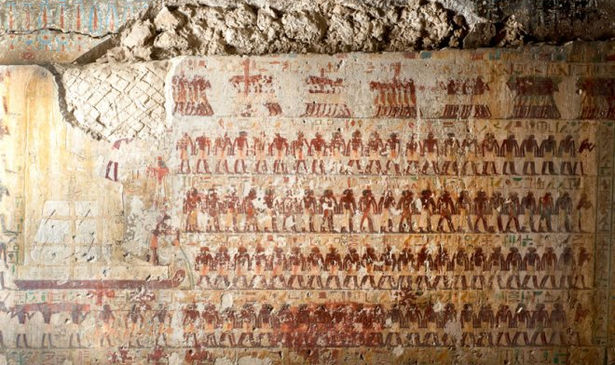Deir el Bersha
Deir el-Bersha, is a necropolis and quarry site on the east bank of the Nile,
The site is important not only for its 39 rock-cut tombs, many similar in style to the later tombs at Beni Hasan, but also for its extensive galleries of limestone quarries. Unfortunately the quarrying and earlier earthquakes as well as more recent vandalism have greatly damaged the tombs which are now in a really bad state of preservation.
The decorated tombs in the cliffs of Deir el-Bersha date from the Old Kingdom, First Intermediate Period and Middle Kingdom
The most famous and most impressive of the Middle Kingdom tombs was constructed for Djehutihotep, a governor who ruled during the Dynasty XII reigns of Amenemhet II and Senwosret II and III. Djehutihotep’s main title was ‘Great Overlord of the Hare Province’. His tomb-chapel has a portico with two palm-columns, a rectangular inner hall and a deep cult chamber with a statue niche up a short flight of steps. The tomb has long been famous for a unique painted scene on the left-hand wall of the inner hall, depicting the transportation of a colossal statue of the deceased from the alabaster quarries at Hatnub to his mortuary chapel. The scene shows how the statue, measuring 6.5m high and estimated to weigh about 60 tonnes, was dragged on a wooden sledge by 172 men pulling with ropes, while another man pours something (presumably water) from a jar to lubricate the ground in front of the sledge. The lifting of the weight was done using wooden levers. The tomb also contains other interesting scenes of daily life in the Middle Kingdom.
Tomb of Gua
held the title of ‘Chief of Physicians’, and was probably Djehutihotep’s personal doctor. A quantity of rich burial equipment was found here, including two beautifully decorated cedarwood coffins, Gua’s canopic jars and several wooden models, now in the British Museum.
Tomb of governor Djehutinakht
discovered by H Lyman Story, registrar of the Boston Museum in 1915. Djehutinakht was ‘Heredetery Prince and Controller of the Two Thrones’, a governor of Dynasty XI. His wife shared the tomb and also confusingly shared the same name. Djehutinakht’s tomb had been anciently plundered but many artefacts were found during its clearance, including the owner’s elaborate and beautifully detailed outer coffin, an unparalleled masterpiece of Middle Kingdom art, and parts of his desecrated mummy, the linen-wrapped head of which was found watching the excavators from on top of the coffin. Among the treasures left behind were several coffins, mummy-masks and funerary equipment, as well as jewellery, superb wooden models, vessels and statuettes.












